Merry Chrimbus, Everyone!
I got sick halfway through. I got a speeding ticket on the way home. But when Tim and Eric brought Chrimbus to Washington, DC on December 1, I got one of the best stage props thrown right into my hot little hands of all time.
And thus, it was the best Chrimbus ever.
My Ongoing War With A College Honors Society
The National Society of Leadership and Success has no notable alumni list. It is unknown whether anyone on its damn-near-anonymous speakers roster is actually an NSLS member. It appears to be in its entirety an organization people who graduated with a 3.0 or above can pay $75.00 to say they’re a member. Considering the national average graduating GPA is around a 3.2, it is unclear what aspects of “leadership” and “success” are embodied in the “slightly shittier than average or above” entrance criterion into NSLS embodies.
Oh, also, they send you a motivational speech every Monday morning just to cheer you up. And by cheer you up, I mean ruin everything.
Sorry, not a speech. A three-minute video clip sprinkled liberally with marketing materials from NSLS – an organization of which one must already be a member to be viewing said content. And viewing this clip involves opening the NSLS e-mail, clicking the link to the NSLS website, finding the tab for the video, and putting in your login information. What’s that? You don’t remember your login? We’ll send it right back to the .edu e-mail address required for membership. What’s that? This is an organization for recent graduates who really have no business ever using or in many cases even having access to their undergraduate, .edu account again? Well, more three-minute clip for us.
Welcome to your Motivational Mondays! Each week you will receive an email with a link to hear approximately three minutes of audio that will help you start your week off on the right foot. After clicking on the link, type in your society Member ID and Password and you will be redirected to the content.
The joke’s on me for actually signing up for this nonsense. I guess I must be easily confused by things that look like they aren’t nothing. There was nothing confusing, however, about the very first thing the NSLS e-mail I received told me that I needed to do, community service, to remain a member – within days of giving them my hard-earned Ramen Noodle funds, er, money.
So I had an out. I could just skip the intro meeting, never do the community service, and get expelled fair and square. Oh, how foolish it was of me to think that NSLS would credibly commit to kicking out their precious would-be bumper sticker purchasers. No, they had three-minute videos to peddle. The e-mails kept coming. I hit unsubscribe. They kept coming, relentlessly, ruining my Mondays (those’re my Bourbon With Breakfast days, goddammit!). I hit unsubscribe on every e-mail, multiple times. Finally, enough was enough. Here is the e-mail I sent these freaks on Wednesday:
Dear National Society of Leadership [and Scholarship. Ed. note: writing this while drunk really gave it the “I don’t deserve to be in an organization that has both “leadership” and “success” in its name” vibe I needed],
I have tried several times to be unsubscribed from this organization. Within the first few e-mails from NLS I knew that I had erred in my decision to join. Apparently, the first thing my membership fee bought me was access to your gift shop, where multiple identical e-mails advised me to take advantage of the exciting opportunity to buy some hideous bumper stickers. The second thing it bought me was the chance to do community service.
Here’s the deal with community service: For most people doing community service, community service is the court-ordered punishment for doing something wrong. For the rest, it is something they are still essentially legally obligated to do as overworked high schoolers in order to get into any four-year institution. This isn’t something your organization is responsible for, but here I feel it’s important to note that it should be more scandalous that universities use community service obligations as basically an introduction to the “pointless work for no reward” mentality that in the final analysis reflects most of the average college education. The point is, I spent high school incentivizing the littering habits of strangers by gaily announcing that I would be only too eager to pick their shit up in all-Saturday-afternoon orgies of cheerfulness like I was part of some insane cult of manically-jovial white people, and serving as a receptacle for the grating complaints of the elderly of retirement communities across Massachusetts because I was convinced that doing so would give me access to something better – so don’t ask me to pay you for the privilege of more indentured servitude to annoying strangers, because I just. Fucking. Graduated. This is the point where I no longer have to pretend that the type of activity usually reserved for legal retribution is how I want to spend my precious Saturdays. Do not ask me to pay you money for the privilege of doing shit I hate for people I hate for no reason.
I thought that by deliberately not showing up to events that were described as so vital to my membership that skipping them would result in automatic revocation of said membership that I would be in the clear. No luck. I ignored every single e-mail from my little local NLS leader. I have deliberately violated every one of my community service obligations. And I have jammed the unsubscribe button to the point where your organization will soon be legally responsible for covering my catastrophic early-onset arthritic misery. So far, no results.
I do not want to be part of your organization. I do not want to be part of your organization. I do not want to be part of your organization. Please for the love of God unsubscribe me from this insanity, and send me an e-mail so that I know you did.
Love,
John
And here is the response they sent me on Monday:
Welcome to your Motivational Mondays! Each week you will receive an email with a link to hear approximately three minutes of audio that will help you start your week off on the right foot. After clicking on the link, type in your society Member ID and Password and you will be redirected to the content.
Oh, it’s on, bitches.
I Love Christine O’Donnell
The following was originally written as a letter to my friend Ismail.
When I ran my first set of election projections, my methodology spat out a loss for Chris Coons to then-presumptive Republican nominee Mike Castle. I reran the numbers after the majority of Republican primary voters chose Christine O’Donnell and witnessed a dramatic reversal: Chris Coons is almost certainly going to trounce O’Donnell.
Political campaigning is difficult for Christine O’Donnell. She is a self-confident, ambitious female seeking public office – read, mences in the water for media commentators accustomed to gaggles of bobbing heads as they confirm to their primarily elderly-white-male audience that here, here is one of the witches; suffer not. I have often wondered if female Christian politicians get the joke that retells itself every time they attempt to hoist the banner of the head-of-every-woman crowd. She faces a media that wants her to lose, and has surrendered her intellect to a faith that wants her to lose. Strikes one and two.
Three: She is unspeakably, unforgivably stupid.
She is unconscionably brainless. Her cognitive abilities and the Zulu space program hang out together on weekends, reveling in the levels of relative functionality they share. There is nothing she could say about public policy that the enucleated carcass of a North American opossum found by the side of the road could not, with its gas-bags squeezed just right, say with equal eloquence and authority.
Edmund Burke, one of the founding fathers of American conservatism and (like most conservatives of the past few centuries) a to-the-death enemy of American democratic institutions, was convinced that democracy must be controlled by a plutocracy properly immunized against public opinion lest rule by majority “devolve” into mob rule. He was convinced democracy could not work because the most immediate, crass, idiotic desires of the average voter would overwhelm the carefully-considered preferences of the hard-working upper crust upon whom their numerous lowers were mere parasites. Most individuals were too stupid to be left to decide for themselves.
This is why I love Christine O’Donnell. More precisely, I love the close similarities her poll numbers, her IQ, and the current night-time temperature of upstate New York share. Because I love democracy and hate Edmund Burke, I love Christine O’Donnell.
The mutants have had their chance in the state of Delaware. They nominated a cuntish windbag who deigns to tell you when it’s okay to masturbate, and to what; who exerts with the casual certainty uniquely accorded to the brainless that you will be set on fire forever by her man-child godking if you ask him to explain where life on earth came from; who has accused every scientist, thinker, and everyone among the innocent and productive and occasionally left-leaning intelligentsia of the lowest insults of deliberate fraud and of conspiratorial commitment to lies about the nature of reality – and demands in turn that the public brand “bigot” onto anyone who dares defend their name from her sick, throaty bleeting. She is an eager slave of the oldest enemy of human rights, and the shackles rattle only louder under the microphone wall.
Christine O’Donnell is losing because the mutants must always lose. The freaks can only demand equality of misery for strangers for so long. We the strangers always fight back. We are a difficult lot, we strangers. We don’t like each other. We don’t meet up every Sunday for wine and cannibalism. We don’t even like the people we vote for. But we are the new moral majority. We are dissatisfied and fucked up and drinkers and assholes – but we are not the mutants. We are not slaves and we are not stupid. We don’t take what we know makes us happy and shit on it. We don’t owe the failed ancien regime the respect of silent deference. They are wrong and they are in the way. And, if we just balls up tell them to fuck off and die already, they don’t get to bully us anymore.
I love Christine O’Donnell because she reminds me that I am not obligated to take the superstitious seriously. I am not obligated to bob my head politely as someone tells me that war is peace and slavery is freedom. I have no compunction to pretend that brainlessness is a virtue. Chris Coons is at least slightly more intelligent than Christine O’Donnell – as are all of us.
When O’Donnell loses she will get to write a book. She will shuffle from talk-show to talk-show crying on the arms of her sympathetic elders about her mistreatment, and they will reward her handsomely. She’ll make more money in a decade than I will in my entire life. But one day she will wake up and she will be alone, because the old die and today’s old will be replaced by generations that know better and are no longer forced to pretend otherwise by the guilt of pity that has cost us so much in the past.
Ismail, you are a stranger. You get to be in a sea of strangers who welcome you with music and merry. She is a mutant in the desert, who had an army behind her that is now exhausted. Her kind will be alone; deeply, irrevocably alone.
Love,
John
How Are We Alive?: Sleeping As A Carnegie Mellon Student
For the last two months of my senior year at Carnegie Mellon University, I kept rough track of my sleep habits. Every day I marked off when I hit the light, and what time I got up. This was during the second semester of my senior year – ostensibly, one of the easiest times of a student’s life, even at a place like Carnegie Mellon.
Turns out during the easiest part of life at Carnegie Mellon I was batting about five hours per night – slightly above five hours per night if we include the last three data points which occurred after the school year had ended, slightly below otherwise.
What was interesting to me was that there were no particular days that warranted particularly later nights than others. The nights before calc were not actually significantly better or worse than the nights before neuro, or industrial history, etc. I wonder if this was because, as much as second semester senior year is about finally getting a break, it’s also about the thesis – a constant, steady stream of lots of work, if you’re doing it right.
Most of my sleep got rolling between two and four a.m., though some times, probably days I spent in the lab working on the ol’ thesis, I was getting to bed at wacky times like 9 a.m. or, just as infrequently, 8 p.m..
By itself this information is useless. For most people, five hours of sleep per night sounds unpleasant but tolerable. Keeping track of sleep is only useful if it tells you something about how much sleep you need to get by. So I devised a simple drowsiness measure to keep rough track of along with my sleep: a 7-point ordinal scale that measures my drowsiness along a rough “7=deathly exhausted, 0=fit as a fiddle” range. I kept track of it under the reference title “Drowsiness Likert” but, don’t worry, I do remember my stats vocabulary better than that. This is not a Likert scale. If it were, 0 would represent “very un-drowsy,” 4 would represent “fine,” and 7 would represent “very drowsy.” It would have a sort of -3 to 3 feel to it. This scale simply represented increasing values of tiredness. Fellow Carnegie Mellon grads can appreciate.
Surprisingly but on second thought predictably, there was no real relationship between how drowsy I told myself I felt during the day and how much sleep I had the night before – that’s not how sleep works. A good sleep schedule isn’t fixed in a day. Four years at Carnegie Mellon means four years of needing a few weeks off. Nor, of course, is a self-reported measure of drowsiness the best way to go about this. Holler to my decision science, psychology, statistics, and sociology graduates. No, a self-reported diagnostic of drowsiness is imperfect, but the only thing that could’ve made me worse at getting girls in school would be to have been caught wandering around asking people, “hey, on a scale of one to seven, how drowsy would you say I looked…”
I also tried to keep track of how comfortable my night’s sleep was, which I figured was important to the overall quality of sleeping and would play some possible role in how drowsy I felt the next day. At first, it didn’t look like the measure I was using made much difference. I kept track of the number of blankets I slept under as a proxy for how comfortable my night’s sleep was, versus how drowsy I felt throughout the day the next day. No success.
But then I was thinking, “what does it mean to be ‘drowsy throughout the day,’ anyway?” I’m never drowsy through an entire day. There’s always some magic moment where it’s like, “hey – now I’m awake!” Every day, it seems, there’s some magic moment where I perk up. I devised a new measure: the amount of time I spent every day feeling drowsy in the morning. Paydirt.
From this angle, my suspicion that a comfortable sleep is important to a good sleep was empirically validated.
F=1.368, sig. of 1-way ANOVA=.274; imperfect, but pretty good. Additionally, by this measure the amount of sleep I got also approached significance, reaching it at the 10% level, p=0.088.
In retrospect, this really made me regret a lot of wasted evenings thinking forty-five minutes in one of the black chairs would get me through a DADSS problem set.
To those of you who didn’t pour a few months into this seems pretty silly. Of course a good night’s sleep in a comfy bed is important. But it’s not a good, solid quantitative obsession unless the numbers produce something useful that you can make a decision based on! It never would have occurred to me that, even as it started to get warm out, a bed with more blankets on it would help me get better grades and be more active. I once dated someone who slept under a mountain of blankets and pillows for as long as she could, and napped as often as she could. Clearly, she was onto something. You win this round, Kajos!
Surviving at Carnegie Mellon is not easy. I hope I have provided something useful to my friends.
Next week’s episode: Alcohol!
The Top Four Worst Parts of the GOP ‘Pledge To America’ (Hint: It Has Four Charts)
General consensus is that the newly-announced Republican platform for November is a dud, policy-wise. Its “revolutionary program” includes:
(1) The most disastrous parts of the previous President’s tax policy
(2) The most popular parts of the current President’s tax policy
But the absolute worst part of the document speaks for itself: The graphic design. Here, in its entirety, is the graphical element to the plans the Republican Party has for remaking America in its own image. These are lifted straight from the Republican Party’s recent “Pledge to America” document. I did not re-size or alter these images in any way.
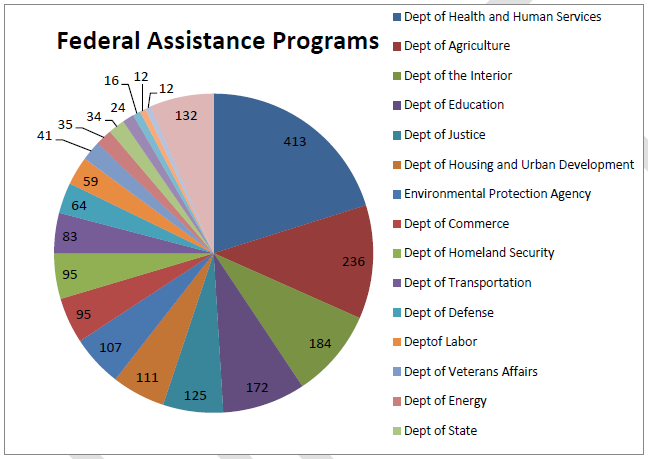
In the report, the caption to this Excel Default Format doozie is “SIDE BAR TEXT/GRAPH.” I’m sure whoever meant to give this thing units, a useful label method, a non-nauseating color scheme and a means of meaningful comparison was just out that day.
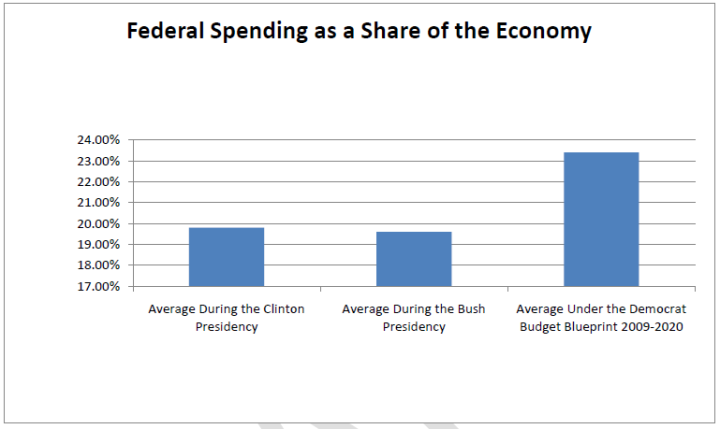
“Default Blue” has always been my favorite shade – and who can resist the “Too Goddamn Much White Space white?” Technically the author of this report is in violation of international law by plotting a percentage-based graph that doesn’t start at 0.00%, but we all know how Republicans feel about international law.

Not pictured: An explanation for what this is doing here, a “zoom in” button, and a citation of where John Boehner Florida electoral recount 2000’d this monstrosity from (and why couldn’t they call in Brady’s intern for this one?).
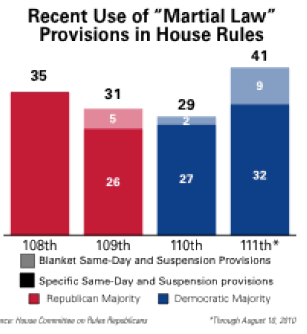
No, WordPress was not responsible for making 95% of the text of this graph illegible. Nor was it responsible for knocking off the three or four years prior where the Republicans invoked this rule-making procedure dozens of times.
But my favorite “graphic” so far comes from MSNBC, where the Tall Tan Stranger himself gets oggled as he presents the talking points package.
Why, Bill Gates, Why Would You Post This Picture
Half of Intrade Users Are Dumber Than Nate Silver, But All of Them Are Smarter
That’s how I’d summarize the ongoing scholarly debate between the use of polls and the use of prediction markets to forecast elections.
Every article that talks about the 538 guy prefaces how he “came to fame” with his “unique approach” based on his time as a baseball numbers guy, that gave him a “near perfect” record on his first hand at election forecasting. Visualizing Data remarks:
Using computer modeling to generate huge numbers of simulated elections (Monte Carlo method?) to help predict the outcomes of the various stages of the election, he rapidly developed a reputation for incredible accuracy, eventually correctly forecasting the winners of 49 of the 50 states and every one of the 35 Senate races [in 2008].
I had a couple of immediate thoughts to this description.
(1) Running large numbers of simulations is not new.
(2) Intrade did better.
At least, its first time (2008 was Silver’s “first” for his method). Intrade users in aggregate accurately predicted the Presidential race in all 50 states and in DC, 34 of the 35 Senate races, and the House races.
Theoretically, there is a good reason for Intrade to be so accurate. Its users put their personal finances at stake in the outcomes of their estimates. There are immediate monetary incentives associated with paying attention. Intrade users are basically paid for having accurate electoral insights. As such, Intrade users are likely to have more insight into the elections than, say, someone whose livelihood doesn’t depend on observing information useful to understanding the outcome.
But I’m particularly irked by the statement that there’s anything revolutionary about Nate Silver’s methods. Especially considering some of his more notorious blunders, like the UK elections, the Maine gay marriage vote, and the long term state of the economy, Silver’s reputation is to me a rather remarkable phenomenon for someone who is fundamentally an unremarkable forecaster. Developing probabilistic models of potential future outcomes is an old and standard practice of statisticians.
The question is, can anyone forecast when there’s going to be some blowback against Silver-mania?
Turns Out I Suck At Modern Warfare 2
I’m awful at Modern Warfare 2. But don’t ask me. Ask my OCD.
During the end of the semester last year, I decided to sit down and annoy my housemates by playing a bunch of games of Modern Warfare 2 so that I could learn about the game. Like how your average college kid thinks he can develop an awesome throw by watching the techniques of great quarterbacks, or like how Dane Cook learns how to be a comedian by studying the routines of other comics. I figured using the magic of statistics, I could track my numbers, observe some learning effects, and get some unambiguous feedback on my performance. Unfortunately, the feedback was unambiguous indeed: I’m so, so fucking awful at this game.
I set out to see how I did with three different guns the game has to offer: the ACR, the FAL, and the M16. I chose these three guns because they were the three highest-rated primary weapons we had unlocked at the time, they have three distinct firing rates and, above all, they were the three weapons I most felt like using at the time. This nerditudinous trek involved ninety rounds of a pretty average game, after all. Oh, and for those of you keeping score, the FAL was last seen in District 9 and Escape from L.A., the ACR was featured in Terminator: Salvation and Transformers 2: Revenge of the Fallen; and the M16 has most recently been used in Alone in the Dark and Land of the Dead. Obviously, I expected the FAL to all-around dominate, the ACR to show promise but result in two wasted hours of my life, and I only used the M16 at the urging of one of my lonely nerd friends. You see what I did there. However, as it turns, out, all of these guns gave me a basically comprehensively Alone In The Dark: The Movie performance.
Regardless of which gun I used, my kill/death ratio didn’t surpass one over the course of thirty games played per gun. For those of you with things to do like hang out with your friends, go outdoors and other things besides meticulously build spreadsheets of your reliably lousy video game performance, a kill/death ratio not surpassing one means I was killed more often than I killed. In every theater in the history of the planet this would mean I would be, mathematically speaking, the worst soldier ever.
For standardization purposes, I used the same secondary equipment for each weapon: The attachment was the grenade launcher, my secondary weapon was the rocket launcher, and my equipment consisted of the stun grenades and Claymores. For those of you who don’t play the game, don’t worry, my choice of secondary gear probably didn’t make any difference. I didn’t learn a damn thing about using them while playing. I played the magic-social-sciences number of 30 games for each gun, randomizing which gun would be played at the start of each given round through the entire round to avoid exogenous time-series effects, and I have to say: If sucking ass at Modern Warfare 2 is annoying, sucking ass at Modern Warfare 2 ninety times in a row is as about as bad as life gets. Ah, life in the First World.
One thing I was hoping was that my awfulness at this game was a function of the type of map I was playing. After all, the ACR, FAL, and M16 are all non-sniper rifles, and some of the game’s maps are just designed for sniper chicanery. Some maps just have exceptionally long or wide open areas. Well, in the words of your mother, nothing’s too long or wide for… Hey look, a graph!
However, there is one interesting stand-out in my performance: My M-16 Experience Point gain per map played. My theory is thus: I suck at using the M-16 even more than I suck at using every other gun. This forces me to try other tactics, fancier moves that earn more experience points like using grenades, making knife kills, and wildly firing the rocket launcher into the air until I hit somebody’s airplane. Who knows. I probably would’ve taken better track of my statistics but, er… ahem…
No stastistically-significant relationship with the quality of my playing, by the way.
Thus, through the power of quantitative obsession, I can now safely say I have absolutely no business playing this game.
Afterthought:
Yes, I spent this entire blog post wondering this, too:
Not even statsy – just stupid.
A Creationist Tries to Talk Probability Theory (now with 100% more jargonic nonsense)
David Abel’s blog post on the website of a Christian Creationist organization masquerading as a peer-reviewed article in a scientific journal is such a wonderful work of freeform bullshit from top to bottom that it simply cannot go unaddressed. Where the author is not wrong, his points are so deliciously coated in hysterical abuses of the jargon that his intent is clear. He actively seeks to be misunderstood. He has no interest in discussion with the type of person who actually wades through his posts with an understanding of what he’s talking about.
Though to be honest, I was tempted to just let this orgy of nonsense disappear into the ether until I saw the author’s selectively-brandished credentials.
Decision Sciences? Now he’s on my turf. And once he’s there, well, let’s just say he did a certain amount of spitting on the floor.
This is an intellectual rebuttal in three parts. The first is the most important, and the one I am most qualified to give: it is my treatment of his attempt to be a decision scientist and a probability theorist. The second is his treatment of biology. The third, the least important to this specific set of claims, is a dressing-down of his intent and his organization, and why it’s dishonest of him to claim he has “no conflicts of interest.”
His post is an attempt to define the universe’s “maximum cosmic probabilistic resources” – that is, an objective standard by which something can be said to be so implausible it isn’t worth considering. This is a bad idea because, instead, the concept of incremental validity exists and we can generally just let evidence speak for itself – but I see where he’s coming from. Academics often complain about people showing up at their door with ideas that are so absurd they’re rejected out of hand – tales abound of, say, physicists being offered to buy patents for perpetual motion machines or philosophers being told to stop thinking and accept the a priori premise of a Divine Creator. You know, wacky stuff like that – so it makes sense to want to rule out the nonsense.
That said, let’s get started.
I’ll try to keep the more “minor” quibbles out of this but by golly Abel makes so many little vocabulary slips that it’s hard not to be inevitably annoyed by them. There’s nothing wrong with not knowing the jargon, unless you pretend you do. For example, when trying to explain his beef with the incredibly unlikely, he says,
Our problem is that extremely low probabilities can only asymptotically approach impossibility.
Which is, of course, untrue – stacking events stack, not, you know… un-stack. I mean, that kind of gets at the very definition of a probability distribution, as repeat trials are required for “extremely low probabilities” to occur, as we wouldn’t have a meaningful definition of “extremely low probabilities” without knowing what a “higher probability” would look like. And who’s the “our” in that statement, anyway?
So one must be a little perturbed by learning right off the bat that this guy probably didn’t do too well in his first stats class – that’s okay, I didn’t do too well at first, either. But that’s also why I’m not trying to tell people the absolute limits of the field.
And then he slips into a particular type of jargon that I’ve only ever heard from people who read and quote a lot of his papers. I hesitate to say whether it’s good or bad to use “the jargon.” On the one hand, jargon is useful because it signals to your colleagues that you’ve done your homework – for example, if you’ve been reading enough of the philosophy literature to casually use and interpret the standard notation of mathematical logic, you’re probably worth reading to other philosophers. And if you’ve been in the social sciences long enough to say “is possibly associated with, under particular observational circumstances” instead of “is,” so much the better. But… well, you just have to take a look at the article to see what I’m talking about.
Acceptance of mathematical axioms is hypothetico-deductively relative. Acceptance of physical laws is inductively relative.
On the one hand… no, it’s not. Math is true whether you want it to be or not. On the other… is it “hypothetico-deductively relative?” I, for one, am baffled. “Could it hypothetically be deduced that acceptance of mathematical axioms is relative?” “Is there, in practice, only a relative acceptance of mathematical axioms?” You have to give this guy a lot of leeway to infer that he knows what he’s trying to say. A less forgiving interpretation is that he wants to just cram as many syllables into every sentence as possible.
But of course asking the right question and getting an answer is not a spontaneous physicochemical phenomenon describable by mere probabilistic uncertainty measures.
I rest my case.
It doesn’t take him long to make another slightly-less-minor misinterpretation of probability theory.
Rejection regions and probability bounds need to be established independent of (preferably prior to) experimentation in any experimental design.
I mean, that much is demonstrably untrue. By counterexample, I ask, how would he know what an outlier in the data looks like a priori? One of the most commonly-accepted formulas for ruling out outliers requires having the data – how else would you know what something “unlikely” in a given data set looks like? Once again, this is a slap-on-the-wrist error, but it really makes one wonder – is this the guy who should be telling us what is objectively “too unlikely?”
And then his mealy-mouthedness comes into focus when he attempts to actually state something plainly, at which point it all falls apart:
The Universal Probability Bound (UPB) [6,7] quantifies the maximum cosmic probabilistic resources (Ω, upper case omega) as the context of evaluation of any extremely low probability event. Ω corresponds to the maximum number of possible probabilistic trials (quantum transitions or physicochemical interactions) that could have occurred in cosmic history. The value of Ω is calculated by taking the product of three factors:
1) The number of seconds that have elapsed since the Big Bang (10^17) assumes a cosmic age of around 14 billions years. 60 sec/min × 60 min/hr × 24 hrs/day × 365 days per year × 14 billion years = 4.4 × 10^17 seconds since the Big Bang.
2) The number of possible quantum events/transitions per second is derived from the amount of time it takes for light to traverse the minimum unit of distance. The minimum unit of distance (a quantum of space) is Planck length (10^-33 centimeters). The minimum amount of time required for light to traverse the Plank length is Plank time (10^-43 seconds) [[6-8], pg 215-217]. Thus a maximum of 10^43 quantum transitions can take place per second. Since 10^17 seconds have elapsed since the Big Bang, the number of possible quantum transitions since the Big Bang would be 10^43 × 10^17 = 1060.
3) Sir Arthur Eddington’s estimate of the number of protons, neutrons and electrons in the observable cosmos (10^80) [22] has been widely respected throughout the scientific literature for decades now.
Some estimates of the total number of elementary particles have been slightly higher. The Universe is 95 billion light years (30 gigaparsecs) across. We can convert this to cubic centimeters using the equation for the volume of a sphere (5 × 10^86 cc). If we multiply this times 500 particles (100 neutrinos and 400 photons) per cc, we would get 2.5 × 10^89 elementary particles in the visible universe.
A Universal Probability Bound could therefore be calculated by the product of these three factors: 10^17 × 10^43 × 10^80 = 10^140
Where he got the density of the universe is anyone’s guess. How he was able to misstate Eddington’s estimate by a factor of four is anyone’s guess. How he decided that there’s no conversion between matter and energy (such that, you know, it would be a bit meaningless to try to describe a constant number of particles in the universe to begin with), or that the particles smaller than atoms, neutrons, and protons don’t matter even though they behave in a less certain fashion than other particles. Let’s go all the way back to basic:
“10^140” isn’t a probability.
“1 in 10^140” might be a probability. But what exactly is Abel describing as having a “10^140” probability? “Any” event? Well, per his own attempt to define the constraint, no.
Abel is dealing with the total possible number of positions individual S-APs could have occupied anywhere in space at any point in the generally-accepted lifespan of the universe… assuming the equal likelihood of any of these particles occupying any point in the universe at any given moment. And I call shenanigans on that line of reasoning.
But of course, that’s the point of Abel’s line of reasoning: to be “maximally permissive” of any event’s occurrence – except that he badly misses the mark. In fact, the bulk of his equation is wrong – ironically, because he appears to have taken a “post modern” view of science that he criticizes. He seems to think there are no such things as the laws of physics.
Yes, this is part of his point – to start us out from an incredibly (nay, “maximally”) implausible point, and work us back from there to demonstrate as many Creationists have tried to do just how unlikely the whole “life” thing is. And in his own special way of trying to do this, he commits what is to me the cardinal sin of the paper:
Here we must point out that a discussion of the number of cybernetic or cryptographic “operations” is totally inappropriate in determining a prebiotic UPB. Probabilistic combinatorics has nothing to do with “operations.” Operations involve choice contingency [27-29]. Bits are “Yes/No” question opportunities [[30] (pg. 66)], each of which could potentially reduce the total number of combinatorial possibilities (2NH possible biopolymers: see Appendix 1) by half. But of course asking the right question and getting an answer is not a spontaneous physicochemical phenomenon describable by mere probabilistic uncertainty measures [31-33]. Any binary “operation” involves a bona fide decision node.
Once again, never mind that this is nonsense. I’m sure it’s obvious to the brilliant readers of this blog that most things you would define as a natural event or “operation” don’t require any choice contingency, that “bits” are not necessarily and are almost never “question opportunities” and that, as such, by the time that last sentence rolls around you’re already on the floor, but just in case… binary stuff happening does not mean someone needs to draw a decision tree. For the curious budding decision scientist, this is a decision tree. The nodes are the little places where someone has to make a choice.
So when David Abel comes along and says that anything with a probabilistic outcome requires “a bona fide decision node,” you say, LOLWAT? He seems to think that conscious agency is required for every situation involving uncertainty (you know, every situation). At this point it starts to make sense why Abel offered a bunch of postmodern nonsense about the laws of physics not existing: that faith is required for his argument. That thing that he’s mocking is necessary for any of his argument to be true.
Consider the universe. Sure, I don’t really know exactly how it started – but once it’s gotten started, if you knew everything about the position, acceleration, etc. of some non-super-teensy object, you could in fact know with certainty what was going to happen to it. If I swing a cat, and I know everything that’s in the way of that cat’s swingward trajectory, as well as the mass, swing acceleration, and fur color of that cat, I could predict what it would do to every piece of furniture in its way. If I had perfect information about, say, some punk from the SPCA getting between my cat and her beloved furniture, I could even predict what that so-called “interruption” would do to the swinging cat’s trajectory and could incorporate it into my analysis of the swinging cat.
Thus, in the “non-quantum” version of Abel’s attempt at probability theory (an unnecessary splitting of models, as the quantum version sums to a non-quantum version), we resume a deterministic universe for all events t>1. We use these tools for dealing with uncertainty in cases where our understanding of an outcome is governed by uncertainty. It’s false to say that, say, we need to draw a decision tree for Saturn’s orbit because Saturn doesn’t make decisions, and couldn’t about such things anyway. Unless you don’t have the laws of physics!
Consider his first attempt at a real-life implication of his faith, for which he dregs up someone else’s biochem paper.
As one of the reviewers of this manuscript has pointed out, however, we might find the sequence space ω, and therefore the probability space f/ω, to be radically different for abiogenesis than for general physico-chemical reactions. The sequence space ω must include factors such as heterochirality, unwanted non-peptide-bond formation, and the large number of non biological amino acids present in any prebiotic environment [8,12]. This greatly increases ω, and would tend to substantially reduce the probability p of naturalistic abiogenesis. Spontaneously biofunctional stochastic ensemble formation was found to be only 1 in 1064 when TEM-1 β-lactamase’s working domain of around 150 amino acids was used as a model [52]. Function was related to the hydropathic signature necessary for proper folding (tertiary structure). The ability to confer any relative degree of beta-lactam penicillin-like antibiotic resistance to bacteria was considered to define “biofunctional” in this study. Axe further measured the probability of a random 150-residue primary structure producing any short protein, despite many allowable monomeric substitutions, to be 10-74. This probability is an example of a scientifically determined p that should be incorporated into any determination of the UPM in abiogenesis models.
And that’s his attempted dig at biology. Citing another Creationist, who wrote a paper that basically accidentally confirmed the evolutionary banality that most things are extinct, they collectively mumbled something about the unlikelihood of certain biochemical structures forming. As with his overall point, this would be a perfectly feasible belief, except that stuff happens in sequence. Stuff that self-replicates survives and becomes a population, and changes in a way that is either beneficial or disastrous. Abel’s Creationist faith requires him to believe this is not the case, that one day there was just a solid chain of peptide bonds doing the whole complex-organism thing – basically, his faith requires him to believe that evolution is false because evolution didn’t happen, because evolution is false, because evolution didn’t happen…
When I started reading Abel’s blog post, I was all excited because here was something that required serious treatment, hardcore skepticism, and research. The difference between that first impression and what’s actually there is kind of like the difference between the format of the academicky website that Abel’s post appears on:
All of a sudden, David Abel is just an old man. A bit confused, but he’s trying. He’s suddenly one of those people who, if you asked him for the address of a website, would start it with, “H…T…T…P…colon… slash… slash… why aren’t you writing that part down?”
Unfortunately, he’s also a little old man who wants you to believe a titanic pile of BS.


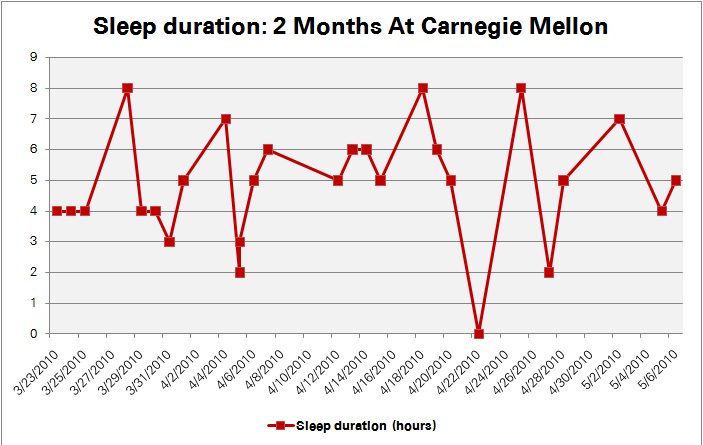



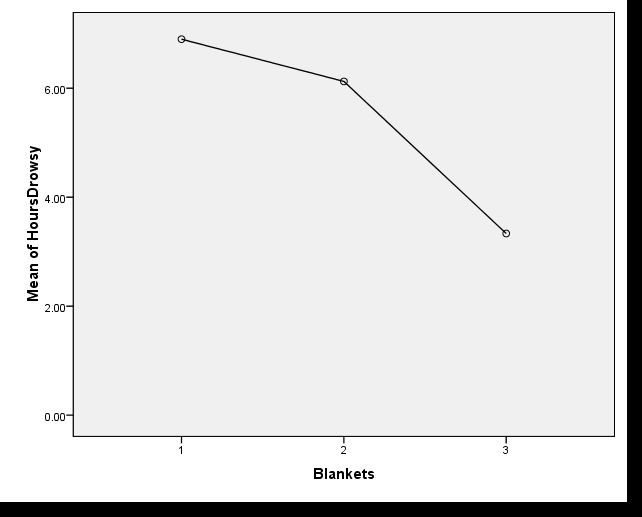







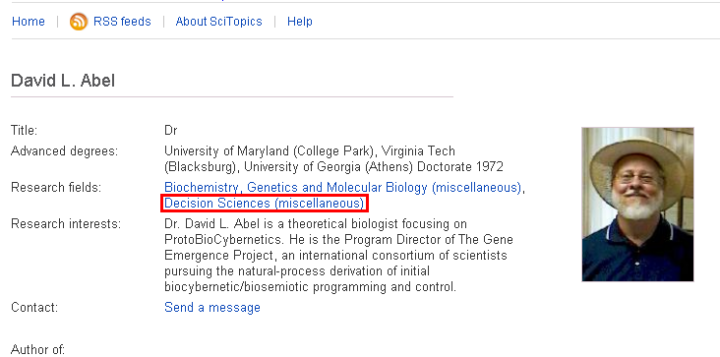
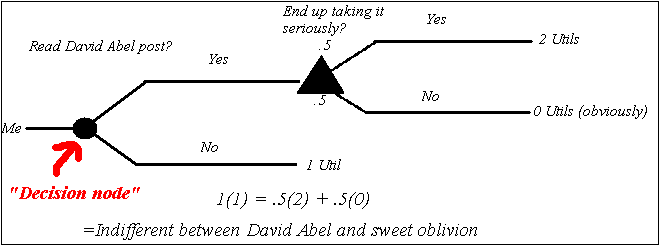

leave a comment